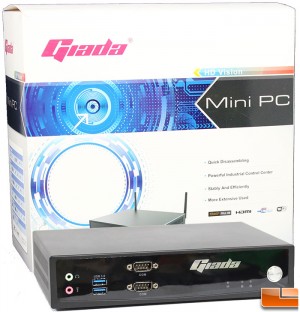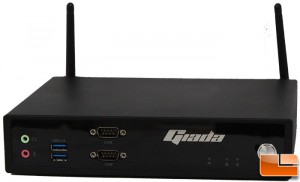Giada D300 Universal Barebone Mini-PC Review
Final Thoughts and Conclusion

The Giada D300 is a complete mini system that is backed by a 2 year warranty. While it is not capable of running graphic intensive games such as Crysis 3, Skyrim, or Metro: Last Light. If it can’t run graphic intensive games with the Intel HD4000 integrated graphics, what could it be used for? As a Home Theater PC it would be a perfect fit, running a web browser, browsing pictures, playing music, streaming video such as Netflix and even some games that do not need a powerful GPU. In addition, the HD4000 graphics was also more than capable of handling a 3D MKV video file. Another option would be to use the D300 as a digital signage unit, automation control system, or even as a security system.
The D300 includes everything necessary to get it up and running quickly. The included HDMI cable ensures that a video connection is easily obtained, while the remote control is a good fit for those using the D300 as a HTPC rather than needing to connect a keyboard/mouse. However, if a keyboard/mouse is desired it can either support PS/2, USB or Bluetooth keyboard/mouse combination. Storage is limited by the size of mSATA drive, which can be up to 480GB or 2.5″ hard drive, which can provide over 1TB of storage capacity.

The biggest limitation to the D300 is obviously the graphics; it would be great to see a model with a more robust graphics system. Keep in mind that would increase the price of this mini-PC.
Speaking of price, there wasn’t a price immediately available on the Giada D300, since the specific configuration will determine the price. Looking at similar systems, I would expect the D300 to start around $400 and go up from there depending on the selection of mSATA, hard drive, and CPU. An included 2 year warranty will help ensure the Giada D300 remains operational for some time.
Legit Bottom Line: The Giada D300 is a small mini-PC that is capable of running web applications, Netflix, standard office type applications, and other non-graphic intensive applications. It is small enough to fit in tight spaces, such as a dorm room, a cabinet as a digital signage unit or in an industrial environment.
